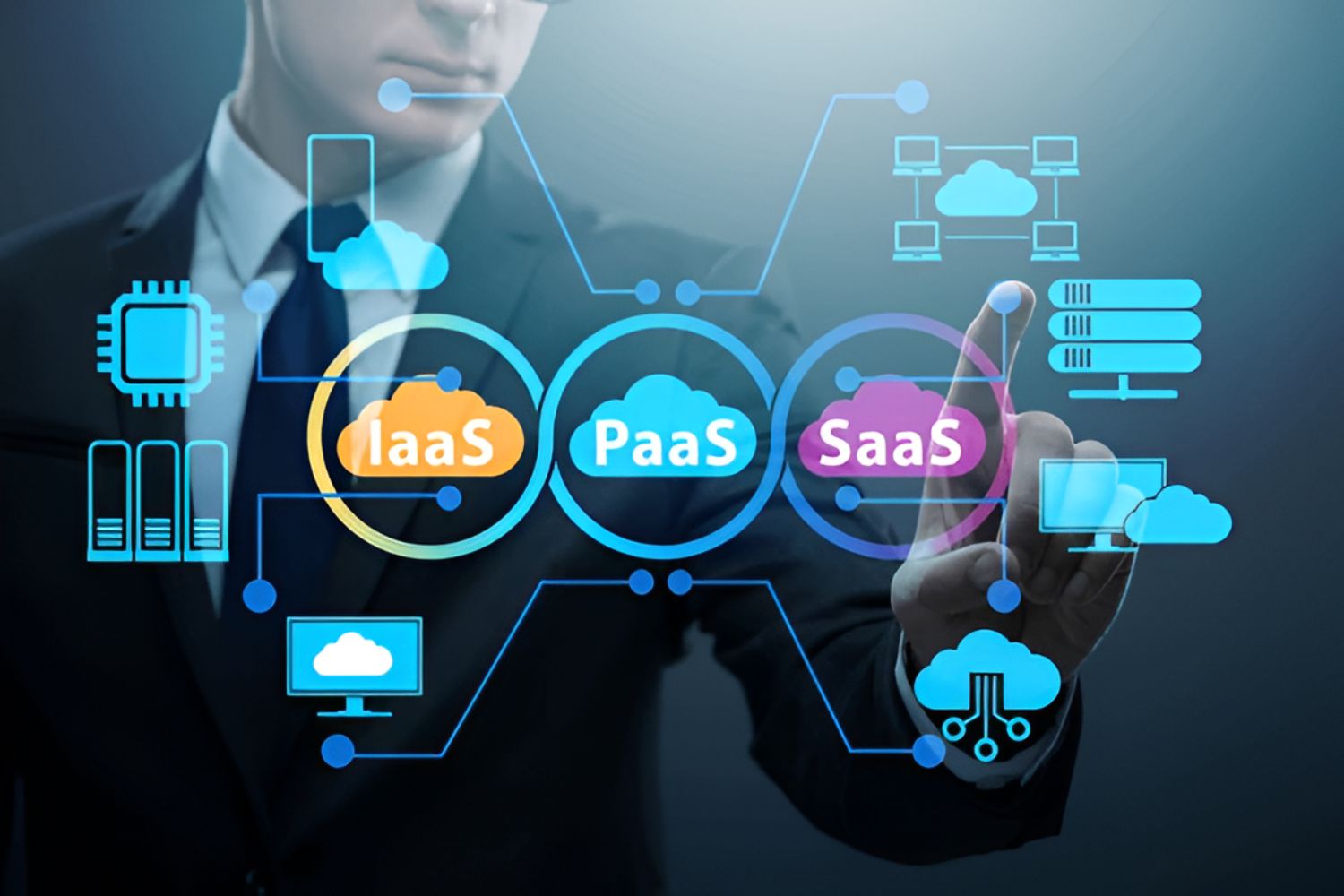Introduction
Welcome to the digital era, where technology is ever-evolving and revolutionizing the way we conduct business and carry out day-to-day activities. One of the major advancements in recent years has been the rise of cloud computing. It has transformed the way organizations store, manage, and access their data and applications. In conjunction with cloud computing, Software as a Service (SaaS) has emerged as a game-changing solution for businesses of all sizes.
SaaS, in simple terms, refers to software applications that are centrally hosted on the internet and accessible to users via a web browser. It eliminates the need for users to download or install software on their local devices, making it a cost-effective and convenient solution for businesses.
Cloud computing, on the other hand, is a model that enables on-demand access to a shared pool of computing resources, such as storage, servers, and applications, which are delivered over the internet. It allows organizations to scale their infrastructure and services without the need for investing in physical hardware.
Now, you might be wondering about the relationship between SaaS and cloud computing. Well, SaaS is actually a subset of cloud computing that focuses on delivering software applications as a service over the internet. In other words, SaaS utilizes the infrastructure provided by cloud computing to deliver software applications to end-users.
The integration of SaaS and cloud computing offers numerous advantages for businesses. Firstly, it eliminates the need for organizations to invest in expensive hardware and infrastructure. With SaaS, all the necessary hardware and software resources are hosted and managed by the SaaS provider in the cloud. This reduces upfront costs and allows businesses to pay for only the resources they actually use.
Additionally, SaaS in cloud computing provides unmatched flexibility and scalability. As the workload of a business increases, it can easily scale up its subscription to SaaS services to accommodate the growing demand, without the need to purchase additional hardware or software licenses.
Furthermore, SaaS enables seamless collaboration and access to applications and data from anywhere, at any time. By leveraging the power of cloud computing, SaaS applications can be accessed through web browsers or mobile devices, making them accessible to users regardless of their location or the device they are using.
However, like any technological solution, SaaS in cloud computing also comes with its challenges and limitations. Organizations need to carefully evaluate factors such as data security, vendor lock-in, and potential service disruptions before adopting SaaS solutions.
What is SaaS?
Software as a Service (SaaS) is a software delivery model where a third-party provider hosts applications and makes them available to customers over the internet. In this model, customers no longer need to install and manage the software on their own servers or devices. Instead, they access the software through a web browser or mobile app.
SaaS offers a wide range of software applications that cater to different business needs, including customer relationship management (CRM), enterprise resource planning (ERP), human resources management, project management, and many more.
One of the key advantages of SaaS is its cost-effectiveness. Instead of purchasing licenses for individual software installations, customers pay a subscription fee to access the software as a service. This eliminates the need for upfront capital investment and reduces maintenance costs, as the responsibility for software updates and infrastructure management lies with the SaaS provider.
Moreover, SaaS simplifies software deployment and reduces implementation time. Customers can quickly access and start using the software without going through lengthy installation and configuration processes. This enables businesses to be more agile and respond to market demands faster.
Another benefit of SaaS is its scalability. As businesses grow, they can easily scale up their usage of the software without the need for additional hardware or software licenses. The SaaS provider manages the infrastructure and capacity planning, ensuring that the software can handle increased workloads and user demands.
SaaS also offers high-level data security and reliability. With data stored in secure data centers and regular backup procedures in place, customers can be confident that their data is protected and accessible even in the event of hardware failures or other disruptions.
Furthermore, SaaS applications are designed with collaboration in mind. Multiple users can access and work on the same application simultaneously, facilitating teamwork and improving productivity. Users can also access their data and applications from any location and device with internet access, providing flexibility and mobility.
However, it’s important to note that SaaS does have some limitations. Customers may have limited control over the software and its customization options, as the software is shared among multiple users. Additionally, reliance on an internet connection can create dependencies and potential disruptions in case of network outages.
Despite these limitations, SaaS has become a popular choice for businesses of all sizes due to its affordability, scalability, and accessibility. It allows organizations to focus on their core operations while leveraging the expertise of SaaS providers to meet their software needs.
What is Cloud Computing?
Cloud computing is a model for delivering computing services over the internet. It involves the provision of on-demand access to a shared pool of computing resources, including servers, storage, databases, networking, and software applications, without the need for local infrastructure or management.
In cloud computing, the resources are hosted and managed by cloud service providers, who maintain the necessary hardware and infrastructure in data centers. Customers can access these resources as and when needed, paying only for the usage or subscription they require.
One of the fundamental characteristics of cloud computing is its scalability. Cloud infrastructure can quickly adjust to accommodate varying workloads, allowing businesses to scale up or down their resource usage as demands fluctuate. This scalability eliminates the need for businesses to invest in expensive hardware upfront or worry about infrastructure limitations when experiencing rapid growth.
Another key aspect of cloud computing is its flexibility and accessibility. Cloud services can be accessed via the internet from anywhere, using a variety of devices such as desktop computers, laptops, tablets, or smartphones. This allows users to work remotely, collaborate with team members, and access data and applications on the go.
Cloud computing also offers cost savings for businesses. Instead of investing in and maintaining their own infrastructure, businesses can leverage the pay-as-you-go model of cloud computing, only paying for the resources they actually use. This reduces operational costs, as there is no need to purchase or maintain physical servers or other hardware.
Data security is a critical concern for businesses, and cloud computing providers address this by implementing robust security measures. Cloud data centers are equipped with advanced security systems and protocols to protect data from unauthorized access, ensuring the confidentiality, integrity, and availability of customer information.
Additionally, cloud computing enables businesses to benefit from automatic updates and maintenance. Cloud service providers take care of the hardware and software updates, ensuring that customers always have access to the latest features and security patches without the need for manual intervention.
Cloud computing also facilitates disaster recovery and business continuity. By storing data in geographically dispersed data centers, businesses can ensure that their data is protected even in the event of natural disasters or system failures. Regular data backups and redundant infrastructure further enhance data resilience and minimize downtime.
However, cloud computing is not without its challenges. Concerns regarding data privacy, regulatory compliance, and vendor lock-in need to be carefully considered when adopting cloud services. It is essential for businesses to evaluate their specific needs and work with reputable cloud service providers that align with their requirements.
Overall, cloud computing has revolutionized the way businesses acquire and use computing resources. Its scalability, flexibility, cost-effectiveness, and enhanced security make it a compelling choice for organizations looking to streamline their operations and leverage advanced technologies.
The Relationship between SaaS and Cloud Computing
SaaS (Software as a Service) and cloud computing are closely intertwined, with SaaS being a specific application of cloud computing. While cloud computing provides the infrastructure and resources, SaaS utilizes these resources to deliver software applications to end-users over the internet.
In essence, SaaS is a subset of cloud computing that focuses on delivering software applications as a service. It leverages the scalability, flexibility, and accessibility of cloud infrastructure to provide software functionality to businesses without the need for local installation or management.
The relationship between SaaS and cloud computing can be understood through the following points:
1. Infrastructure: Cloud computing provides the underlying infrastructure for SaaS. The cloud infrastructure includes servers, storage, networking, and other computing resources hosted in data centers. SaaS applications run on this infrastructure, allowing users to access the software remotely via the internet.
2. Resource Sharing: SaaS takes advantage of the resource pooling capabilities of cloud computing. Multiple customers can share the same infrastructure and resources, resulting in cost savings and efficient resource utilization. The cloud provider manages the resource allocation, ensuring that each customer receives the appropriate level of service.
3. Scalability: Both SaaS and cloud computing offer scalability. Cloud infrastructure allows for easy scaling of resources to meet changing demands. SaaS applications can be accessed by a large number of users concurrently, and the cloud infrastructure scales up or down based on the user demand. This scalability eliminates the need for businesses to worry about capacity planning or investing in additional hardware.
4. Accessibility: Cloud computing enables remote access to applications and data, and SaaS capitalizes on this feature. SaaS applications are web-based, allowing users to access them from anywhere with an internet connection. This accessibility is beneficial for businesses with remote teams, allowing employees to collaborate and access the software from different locations and devices.
5. Maintenance and Updates: Cloud computing providers handle the maintenance and updates of the underlying infrastructure, which benefits SaaS providers and users. This alleviates the burden of software updates and maintenance for SaaS providers, allowing them to focus on improving the features and functionality of their applications. Users also benefit from seamless updates without the need for manual installations or interruptions.
6. Cost-effectiveness: SaaS in cloud computing offers cost advantages for businesses. By leveraging the shared cloud infrastructure, SaaS providers can offer their services at a lower cost compared to on-premises software solutions. Customers also benefit from the pay-as-you-go pricing model, where they only pay for the actual usage, without the need for upfront investments in software licenses or hardware infrastructure.
Overall, the relationship between SaaS and cloud computing is symbiotic. SaaS relies on the underlying cloud infrastructure to deliver software applications efficiently and cost-effectively. The integration of SaaS and cloud computing has revolutionized the software industry, allowing businesses to access powerful applications on-demand, with scalability and flexibility to meet their evolving needs.
Advantages of SaaS in Cloud Computing
Software as a Service (SaaS) in cloud computing offers numerous advantages for businesses of all sizes. By leveraging the power of cloud infrastructure, SaaS enables organizations to access and utilize software applications as a service over the internet. Here are some key advantages of adopting SaaS in cloud computing:
1. Cost-Effectiveness: SaaS in cloud computing eliminates the need for businesses to invest in costly hardware and software infrastructure. With SaaS, organizations can avoid upfront capital expenses and only pay for the software services they actually use, typically through a subscription model. This cost-effectiveness makes SaaS an attractive option for businesses with limited budgets, as they can access high-quality software applications at a fraction of the cost of traditional on-premises solutions.
2. Scalability: Cloud computing provides exceptional scalability, and SaaS applications can seamlessly leverage this feature. As businesses grow and demand for software services increases, SaaS providers can easily scale up the resources and capacity to accommodate the growing user base. This scalability ensures that businesses have access to the required computing power and storage without the need for extensive infrastructure changes or investment in new hardware.
3. Accessibility and Flexibility: SaaS applications in cloud computing are accessible from anywhere, at any time, as long as there is an internet connection. This accessibility enables businesses to support remote work and collaboration, allowing employees to access the software applications they need from different devices and locations. Moreover, SaaS applications are often designed with mobile responsiveness, ensuring that users can access and utilize the software on smartphones and tablets, enhancing productivity and efficiency.
4. Rapid Deployment: Implementing SaaS applications in the cloud is significantly faster and smoother compared to traditional software deployments. With SaaS, there is no need for complex installation processes and compatibility checks on individual devices. Users can start accessing the software immediately through a web browser or dedicated application. This rapid deployment allows businesses to swiftly adopt new software solutions and realize the benefits without lengthy delays or disruptions.
5. Automatic Updates and Maintenance: SaaS in cloud computing relieves businesses from the burden of software updates and maintenance. SaaS providers handle the regular updates and patching of the underlying software infrastructure, ensuring that users always have access to the latest features and security enhancements. This eliminates the need for manual updates on individual devices and ensures that businesses can focus on their core operations rather than software management.
6. Enhanced Security and Data Protection: Cloud computing provides robust security measures, and SaaS applications benefit from this enhanced security. SaaS providers invest in advanced security technologies, encryption, and multi-factor authentication to protect sensitive data and privacy. They also employ redundant infrastructure and regular backups to ensure data availability and resilience, minimizing the risk of data loss due to hardware failures or disasters.
By adopting SaaS in cloud computing, businesses can leverage these advantages to streamline their operations, access cutting-edge software applications, reduce costs, and enjoy the flexibility and scalability needed to thrive in today’s digital landscape.
Challenges and Limitations of SaaS in Cloud Computing
While SaaS (Software as a Service) in cloud computing offers numerous benefits, it is important to recognize the challenges and limitations that organizations may face when adopting this model. Understanding these challenges can help businesses make informed decisions and mitigate potential risks. Here are some key challenges and limitations of SaaS in cloud computing:
1. Data Security and Privacy: One of the main concerns with SaaS in cloud computing is data security and privacy. Businesses need to ensure that their sensitive data is adequately protected against unauthorized access, data breaches, and accidental leaks. It is crucial to perform due diligence and select reputable and trustworthy SaaS providers that prioritize the implementation of robust security measures, including encryption, access controls, and regular security audits.
2. Vendor Lock-In: Adopting a SaaS solution often involves a long-term commitment to a specific vendor. Businesses need to carefully evaluate the exit strategy and consider the challenges they may face if they decide to switch to a different SaaS provider or bring the software in-house. Vendor lock-in can limit the flexibility and freedom of businesses to make strategic changes in the future, and it is essential to have a clear understanding of contractual obligations and data portability options.
3. Customization Limitations: SaaS applications typically offer limited customization options compared to on-premises solutions. Since SaaS applications are shared among multiple customers, providers need to maintain a standard version that meets the requirements of a broad user base. This can limit the ability of businesses to tailor the software to their specific needs and may require adapting internal processes to fit the software capabilities.
4. Reliance on Internet Connectivity: SaaS applications in cloud computing heavily rely on internet connectivity. Any disruption in internet service can severely impact the availability and accessibility of the software. Businesses located in areas with unreliable or limited internet access may face challenges in using SaaS applications effectively. It is crucial to assess the quality and reliability of the internet connection and have backup plans in case of network disruptions.
5. Limited Control: With SaaS, businesses have limited control over the software infrastructure and operations. The responsibility for managing and maintaining the underlying infrastructure lies with the SaaS provider. This lack of control can create dependencies and make it challenging to troubleshoot issues or customize the software to align with specific requirements. Businesses need to thoroughly evaluate service-level agreements and ensure that they have sufficient support and service guarantees from the SaaS provider.
6. Compliance and Regulation: Businesses operating in specific industries or regions may be subject to compliance requirements and regulations concerning data privacy, confidentiality, and storage. It is crucial to ensure that the chosen SaaS provider adheres to the necessary compliance standards and can provide appropriate levels of data protection in line with regulatory requirements.
While these challenges and limitations exist, they can be addressed with proper planning, risk assessment, and proactive management. By understanding the potential hurdles, businesses can make informed decisions, establish mitigating strategies, and work with reputable and reliable SaaS providers to maximize the benefits of SaaS applications in cloud computing.
Examples of SaaS in Cloud Computing
SaaS (Software as a Service) in cloud computing offers a wide range of software applications that cater to various business needs. These applications are hosted and accessed over the internet, providing businesses with cost-effective and flexible software solutions. Here are some examples of SaaS applications in cloud computing:
1. Customer Relationship Management (CRM) Software: CRM software, such as Salesforce, is a popular SaaS application that helps businesses manage their customer interactions, sales pipelines, and marketing campaigns. This cloud-based CRM enables organizations to centralize customer data, track leads, automate workflows, and improve overall customer satisfaction.
2. Enterprise Resource Planning (ERP) Software: ERP software, like Oracle NetSuite and SAP Business ByDesign, allows businesses to integrate and streamline their core business processes. These SaaS-based ERP solutions offer modules for finance, inventory management, human resources, supply chain management, and more. They enable real-time insights, efficient resource allocation, and improved operational efficiency.
3. Collaboration and Communication Tools: SaaS applications such as Microsoft Teams, Slack, and Google Workspace (formerly G Suite) provide cloud-based collaboration and communication tools. These applications allow teams to collaborate on projects, share documents, conduct video conferences, and communicate in real-time, enhancing productivity and teamwork.
4. Human Resources Management Systems (HRMS): HRMS software, such as Workday and BambooHR, offers comprehensive cloud-based solutions for managing employee information, recruitment, onboarding, performance management, payroll, and benefits administration. These SaaS applications streamline HR processes, improve data accuracy, and enhance employee engagement.
5. Project Management Software: SaaS project management tools like Asana, Trello, and Basecamp help businesses plan, track, and collaborate on projects effectively. These cloud-based applications provide features such as task management, team collaboration, project timelines, document sharing, and progress tracking, enabling organizations to optimize project workflows and meet deadlines efficiently.
6. Document Management Systems (DMS): SaaS-based DMS applications, such as Dropbox Business and Microsoft SharePoint, offer centralized document storage, collaboration, and version control. These cloud-based solutions allow businesses to securely store, share, and manage documents, promoting seamless collaboration, document organization, and accessibility across teams and departments.
7. Marketing Automation Software: Marketing automation tools like HubSpot and Marketo provide cloud-based SaaS solutions for automating and streamlining marketing activities. These applications offer features such as lead management, email marketing, social media management, analytics, and campaign tracking, helping businesses nurture leads, drive conversions, and measure marketing ROI.
8. Sales and E-commerce Platforms: SaaS sales and e-commerce platforms, including Shopify, BigCommerce, and Magento Commerce, enable businesses to create online stores, manage inventory, process payments, and track sales. These cloud-based solutions provide a user-friendly interface, customizable design templates, secure payment gateways, and order management capabilities, facilitating seamless online selling experiences.
These are just a few examples of the vast array of SaaS applications available in cloud computing. By offering cost-effective and flexible solutions, SaaS in cloud computing allows businesses to access powerful software applications without the need for significant upfront investments in hardware or software licenses.
Conclusion
SaaS (Software as a Service) in cloud computing has revolutionized the way businesses access and utilize software applications. By leveraging the power of cloud infrastructure, businesses can take advantage of cost-effective, scalable, and accessible software solutions. SaaS applications offer numerous benefits, including reduced upfront costs, rapid deployment, automatic updates, and enhanced collaboration.
The relationship between SaaS and cloud computing is symbiotic, with SaaS utilizing the underlying cloud infrastructure to deliver software as a service. Businesses can leverage the scalability, flexibility, and cost-effectiveness of cloud computing to access a wide range of software applications, from customer relationship management (CRM) and enterprise resource planning (ERP) to collaboration tools and project management software.
However, businesses must be aware of the challenges and limitations associated with SaaS in cloud computing. Data security, vendor lock-in, customization limitations, reliability of internet connectivity, and limited control are factors that need to be carefully considered and managed. Evaluating the compliance requirements and choosing reputable SaaS providers can help mitigate some of these challenges.
Overall, SaaS in cloud computing offers businesses the opportunity to streamline their operations, access advanced software functionality, and reduce costs. It enables organizations to focus on their core operations while leveraging the expertise and infrastructure of SaaS providers. By carefully evaluating their needs, businesses can choose the right SaaS applications in cloud computing that align with their requirements and contribute to their success in the digital era.

























